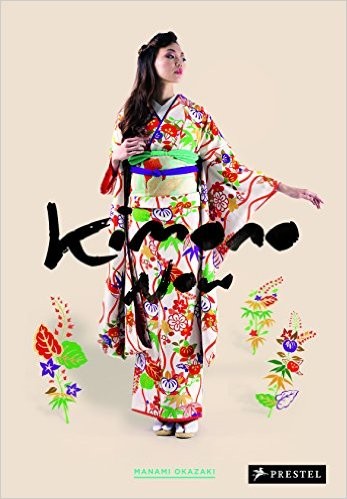Kimono Flea Market ICHIROYA's News Letter No.609

Recently I was a bit depressed by the news about the `kimono incident' at Boston Museum of Fine Arts (MFA). It was not because I was having trouble understanding what was really the point. What made me depressed was there seemed Kimono still have this fixed image, which associates with certain role. It has been too long!
However, there was a brightening news-one of our customer notified us about this newly opened kimono store in Los Angeles.
http://www.openthekimonostore.com/
The two women from completely different field founded this store (co-founded by Ibby Hartley, a former Joie designer, and Lise Matthews, a Venice-based architect). I loved to read how they started--`over the years, Lise would hand sew Yuktata-style kimonos as gifts for friends and family'. The reason of making this store is very simple-and their products seem so suteki (very nice!). There is no negative impression in the word `Kimono' and to be honest, Japanese people may want to visit the store to buy their lovely loungewear. `Subtle, understated and comfortable.....' I like this part too!
There is another thing which was brightening, actually the book blew me away! `Kimono Now' was an amazing book. I can tell you how much I was attached to the book...I could not stop reading - I started reading in Sunday afternoon and finished before supper, which was miracle for me (to me, reading books written in English is like doing a big summer homework, I prefer reading in Japanese). The book had this charms and truth, I never got sleepy, I was so excited to turn each page.
The photos are great, I did not know the auther Manami Okazaki has published many other books which also look quite unique.
I am sure you will enjoy. As I read this book, I noticed my heart lift. I had this frustration over the years-there are books about both traditional style kimono and pop-culture style kimono, but I have not seen something which can tell the `real time' kimono situation. It is not the book to `teach' how to dress in kimono or `educate' about kimono textiles, yet it is telling what was and is kimono for us, by introducing exclusive kimono brand, unique entrepreneur with unique products and cutting edge young designers and so on. The work by the foreign artists who were inspired by kimono was fabulous ( I called Ichiro many times saying, `Look at this! You should see this!).
The author covered the important point of the path how kimono survived until today and what should be mentioned especially is that she focused on young people and contemporary kimono. As she wrote, there was a vintage kimono boom occured from late 1990 to the early 2000s--they loved the bright, bold design from Taisho(1912-1926) and some of them became kimono designers, or open their own indie shops. This is one of the wave and also the new comers from outside of kimono industry are enhancing the possibility of kimono as a garment. It was so inspirational to read some artists consider kimono as a `canvas'. The insight by Patricia Mears was so interesting to understand how the kimono `bathrobe phenomenon has started. Actually all chapter was interesting and encouraging that made me feel there is no need of feeling depressed about the fixed image of kimono. Both from Japan and also abroad, there are innovative people who find the flexibility and new value in kimono, which is made of cut square panels and going forward with their own unique way. I think the book can tell the present position of kimono and bright aspect.
*We were so happy and excited to see some of our customers in this book too!